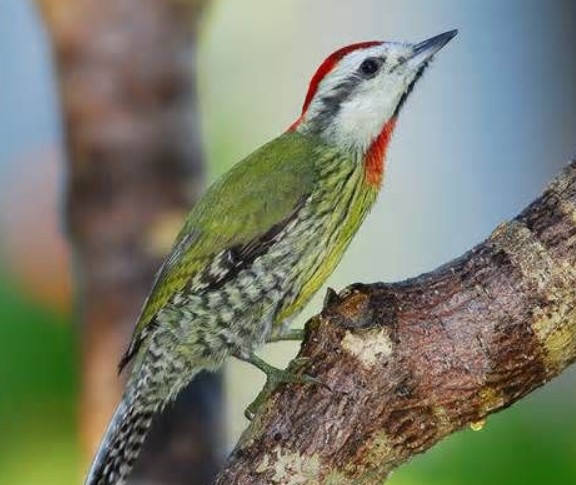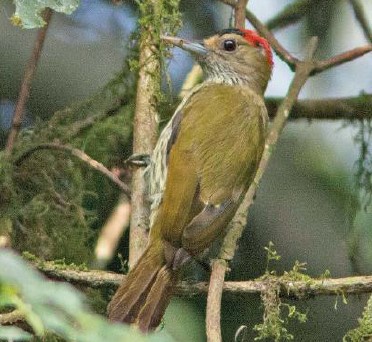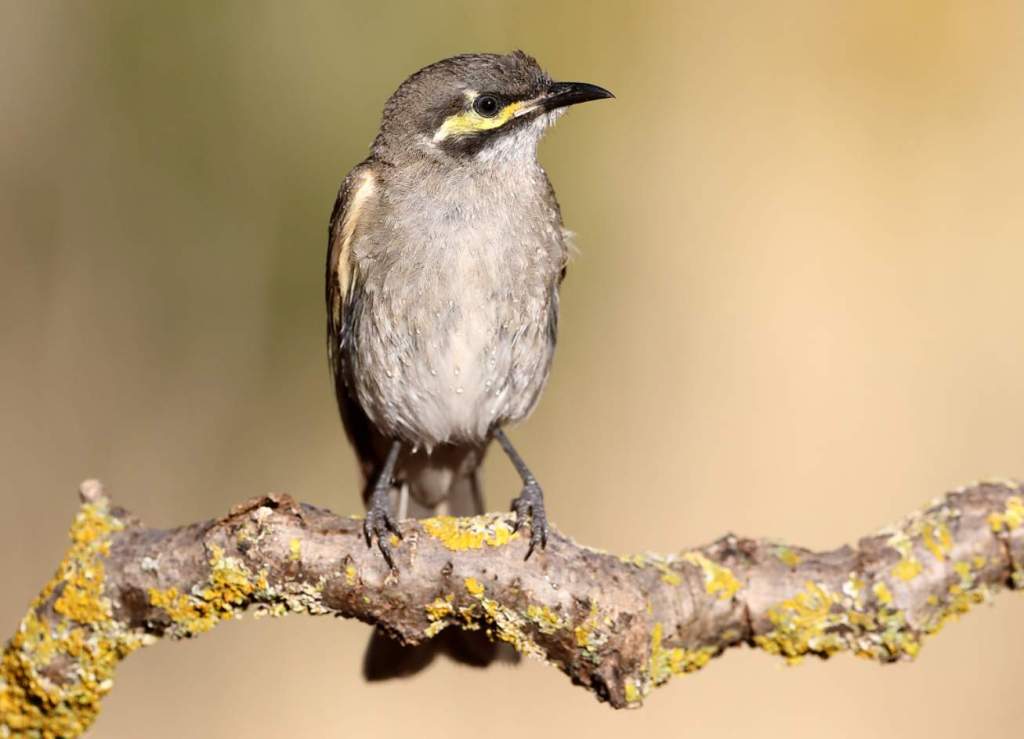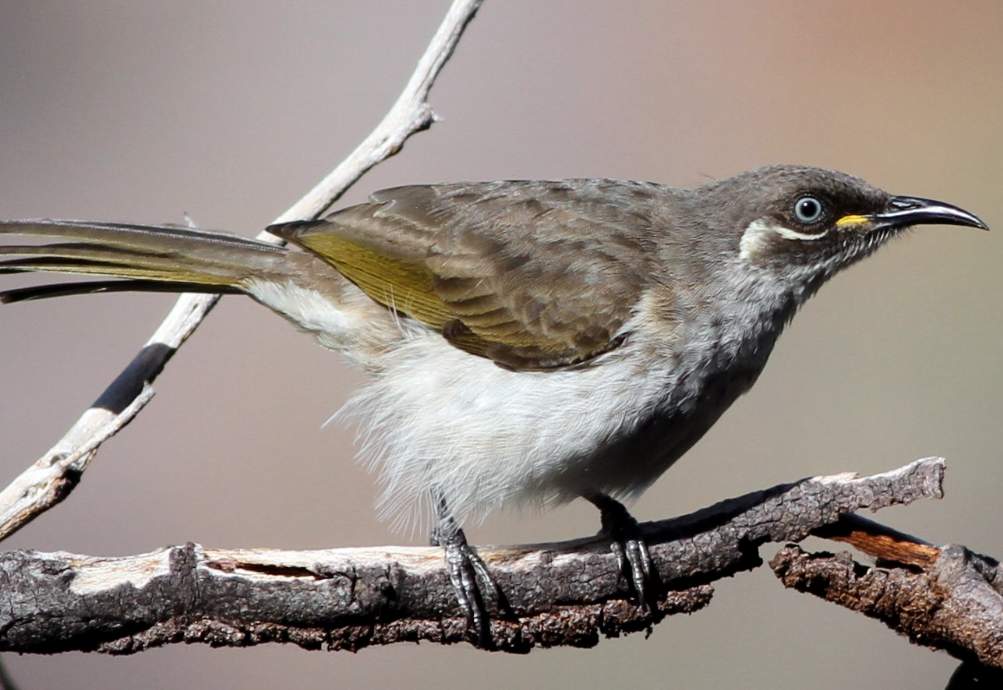Identification: The Elliot’s Woodpecker (Dendropicos elliotii) is a long-tailed woodpecker with a plain appearance. There are some brown or bronze tones in its mantle, back, and wings, mostly unmarked. There is a paler color on the underwing. There is a brownish color on the uppertail and a yellowish color on the undertail. Below, the buff or yellow color is streaked with brown or olive.
There are fine streaks of cream on the chin and throat. Buff or brown is the predominant color of the face, the lores, the forehead, and the ear coverts. There is a fine, dark malar that is sometimes difficult to distinguish. The bill is relatively long, the lower mandible is grayish, and the tip is yellowish with a reddish iris. Grey is the color of the legs.
The sexes differ. In males, the forecrown is black, with red running from mid-crown to nape; in females, the forecrown is black throughout. Drabber juvenile with brown iris and streaks below. In the juvenile male, there is much red on the crown, while in the juvenile female, it is only on the rear.

Vocalizations: There is remarkable taciturnity and nonresponsiveness to the call of Elliot’s Woodpecker. Known calls include a whining, nasal weeeyu; a shrill, harsh kree-kree-kree, tree-tree-tree or bwe-bwe-bwe; and a buzzing, rattling series of churr notes. A more pleasant series of two-syllable kiwik-kiwik-kiwik notes is sometimes heard as well. The bird is drumming, but not an avid one. Slow, subtle rolls are occasionally produced.
Status: The Elliot’s Woodpecker is very common in the local area. Largely distributed, but fragmented and often absent from habitats that appear to be suitable. It is possible that they are overlooked. There is a lack of data, but overall it is considered stable. According to the IUCN, it is of “least concern” in terms of conservation.

Habitat: Throughout its range, it inhabits a variety of habitats. This species is mainly found in dense, damp, moss-covered, mature tropical forests in the highlands. Some lowlands also nominate races.
Range: It is mainly found in Africa. From Nigeria eastward to Rwanda and Uganda, southward to Angola, but discontinuous Approximately 2300 meters above sea level. A resident and sedentary individual.
Taxonomy and variation: It is sometimes placed in a separate genus, Mesopicos. Each race has its own characteristics. The elliotii has an olive-green face, olive-green ear covers, and a bold streak of brownish underparts.
It lives in Cameroon, Gabon, Angola, the DR Congo, Sudan, and Uganda. Johnstoni (upland SE Nigeria, W Cameroon, and Bioko Island, Gulf of Guinea) has a paler face and mostly plain, or only faintly marked, buff or green underparts. Occasionally, birds in NW Angola are classified as another race known as ‘gabelas’ due to fine streaks on their undersides.
Similar species: A sympatric green woodpecker of similar size tends to be more marked beneath and/or on the face than a plain green woodpecker.
Diet: Elliot’s Woodpecker searches for insects from the canopy to the understorey, typically exploring leaf clusters, epiphytes, and moss-covered branches. The diet consists largely of insects, especially the larvae of beetles. Mixed-species foraging parties are common.
Size: The size of Elliot’s Woodpecker is around 19–21cm in length.
Family: Elliot’s woodpecker is a species of bird in the family Picidae.
Another name: This woodpecker is also known as Johnston’s Woodpecker (when johnstoni race was treated as species).







